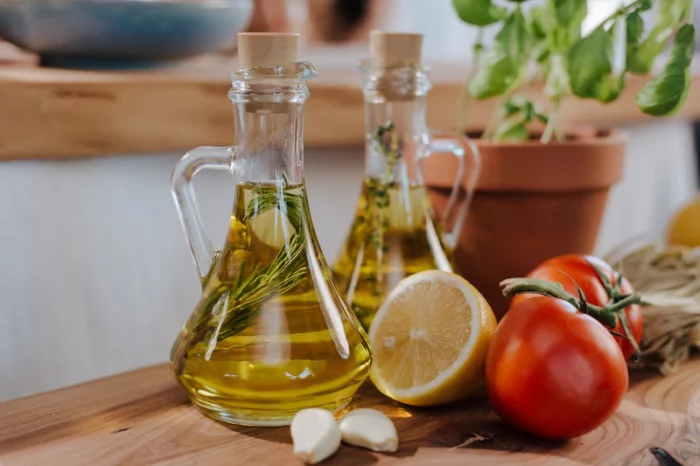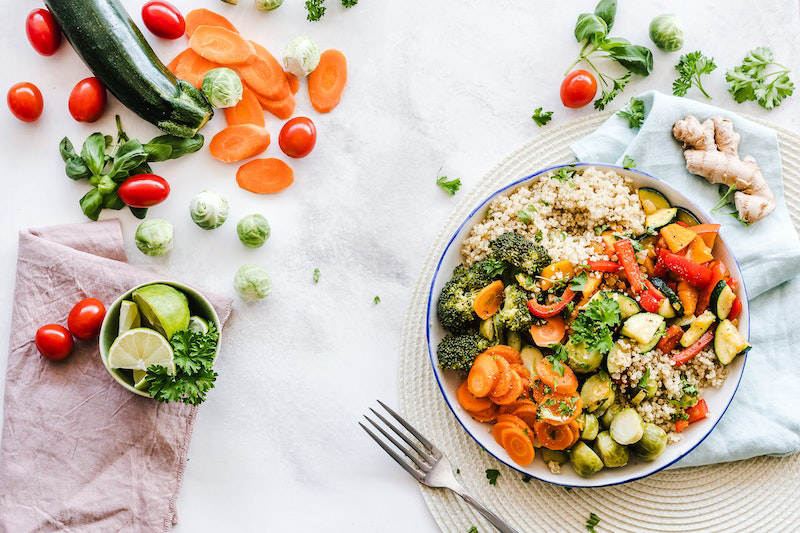
The Mediterranean diet is universally recognised and Italian cuisine is the symbol of a healthy diet and tasty food.
It is the result of hundreds of years of a mix of cultures in southern Italy that have implemented a genuine diet full of variegated natural ingredients, mostly vegetal with the extra virgin olive oil as its basic ingredient.
Based on this diet we should eat daily whole grains and cereals, fruits and vegetables, a few times per week fish and seafood, daily to weekly milk, yoghurt, cheese, eggs, poultry, monthly or in small amounts red meats and sweets. Of course, everything is supported by daily physical activity.
It could seem strange and unethical but the food sector is the most counterfeited, followed by fashion-clothing and design. The repercussions are not only economic but above all on our health.
Junk food is definitely a risk factor for human health.
Spotting counterfeit
Pizza and many other Italian food products have been declared “UNESCO Heritage” and it is undoubted that many restaurants and food shops all over the world play on “Italian sounding” items to sell more and more.
So, how do you recognize a real product from a fake product?
This is important for preserving not only the quality of the product or the service (if we are talking about restaurants) but also our health, the culture of the said diet, the traditions and the producers.
But how genuine is the Italian item you bought?
Most of what we buy or taste may not necessarily be real Italian, nor do they have any connection with the Mediterranean diet at all. This is the main problem for the Italian honest producers and food lovers.
The great chains of supermarkets cannot sell specialities but often produce industrial-grade products with a minimum of guaranteed standard which are so far from high quality products but the specialty shops and the high-end restaurants should do their role.
Made in Italy is a benchmark and, for this reason, the level of counterfeiting for Italian products is so high that you cannot imagine what you can find on the market. Just to make an example, there is a fake Parmigiano made from the pulp of a tree rather than cow milk of Italy (I do not want to mention where it has been found).
How can we recognize an authentic product?
Before purchasing a quality product, you must know everything about it and gather all necessary information on the product and the producer. You should always be well informed on the main characteristics of the object of your desire. This applies to all kinds of products from everywhere.
Your first contact is the Dealer, who must give you all information about your purchase so, if you know enough about it, you can be sure of what the dealer is telling you, otherwise, ask for more details.
Therefore, if you are interested in tasting something really genuine and typical of a specific region, you must know all about it (place of origin, way of production, its specific features, history, etc..)
Let’s talk about one of the most counterfeit products you can find on the shelves or in the restaurants: the extra virgin olive oil, the King of Mediterranean Diet ingredients.
How many benefits when using this natural millennial product?
The Romans used it not only for eating but for much more: it was a medicine, a carrier for epidermal drug absorption, it was also a way of payment (as it was considered precious).
Indeed it is a natural remedy, rich in vitamins, polyphenols, antioxidants and many other elements good for your health (cancer, stomach, heart, skin).
An authentic extra virgin olive oil is a natural booster that exalts flavours and taste of a good meal. If you complete a dish with a drizzle of raw oil before eating, from first courses to second courses and desserts, you can appreciate the difference.
How to know whether the extra virgin olive oil is authentic?
It is not just a fact of acidity grade that distinguishes the oil (which can be easily adjusted to a level below 0.8% as stated by EU regulations). When you taste a good extra virgin olive oil you must pay attention to many factors: the smell, the colour, the density, but they are still not enough.

Starting from these features, if you want to make a test, take a small round glass and pour a small quantity of oil inside. Warm the small glass in your hands, keeping the glass in one hand and use the other hand to cover the top of the glass, swirling gently.
Once you have warmed the glass and the content, remove the hand that covers the glass and smell the oil a few times. All flavours should come up.
After this, put a few drops of oil on your tongue, close your mouth, warm the oil in the mouth for a few seconds and then inhale strongly through the mouth keeping the teeth clenched a few times. Now you should feel a strong pinch in the throat. The more strong the oil is, the more authentic extra virgin olive oil.
At this point you could have a cough reflex but at the same time you should have all the characteristic flavours coming up from the oil in your mouth and your nose, remaining for a long time. These flavours are different, depending on the variety (so called cultivar) of the olives they have made the oil (spicy, fruity, almond, artichoke, green leaves).
Many famous chefs use to match meals with “mono-cultivar” extra virgin olive oil (using only one cultivar of olives and not a blend of them) which have a specific flavour, like wines and mineral water.
This is the way to understand how genuine an extra virgin olive oil but it is still not enough if you want to know the origin and the manufacturing of the product. All extra virgin olive oil bottles or containers should have a “clear” label of the producer and all necessary information about the product, its origin, its registration ID (for organic products), production plant address, nutrition facts, and further information to be given to the consumer.
Start with the label
For these reasons you have to check all this information on the label to be sure that it is not fake.
Most of the time these data are not complete or deliberately incorrect, usually abroad. Producers must print on the label all this data as they have to be compliant to a strict regulation on the labelling of extra virgin olive oil in Italy. Therefore, reading carefully the label, you can understand enough about the product you are purchasing and you’ll be able to choose among different items. But if you go outside Italy, you can find more disinformation on the label and the Italian sounding could mislead you.
This means you can find any kind of product on the shelf. There are hundreds of examples, from the oil simply produced in one country and packed in another one, to the blend of canola oil and 5% of extra virgin olive oil and so on.
Last but not the least, be wary of olive oil cruets on restaurant tables! They are often refilled with low quality oils or they make the mistake of adding fresh oil to stale oil (that has been lying in the crust for a while turning rancid because of contact with the air). This also makes fresh oil absolutely unpalatable!
Better to have small dark bottles of extra virgin olive oil on the table with a clear and clean label (if it is dirty or too greased, maybe it has been refilled). These bottles should not be easily refillable. Notice that extra virgin olive oil must be stored in a dry, dark, and fresh place. The worst enemy of good oil is light, air and excessive heat.
I hope this helps you to better appreciate the Mediterranean Diet and its basic ingredient, the genuine extra virgin olive oil.
Buon appetito!







